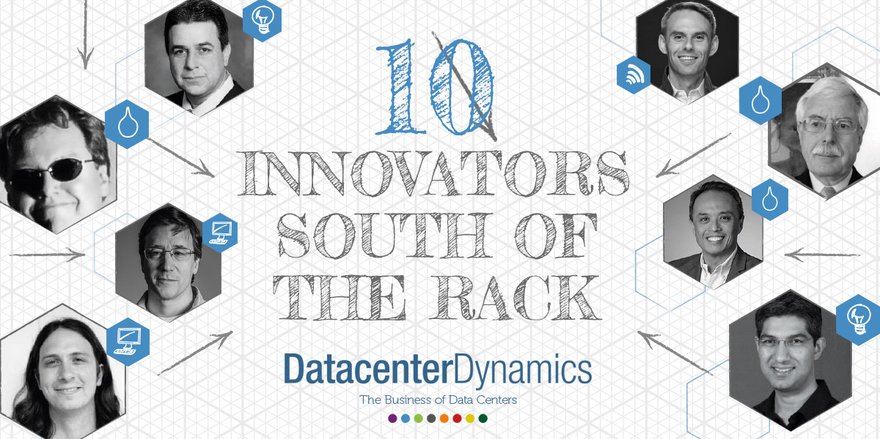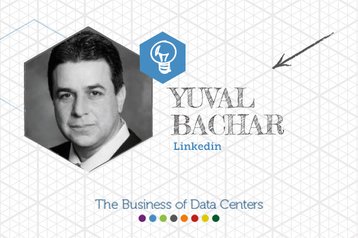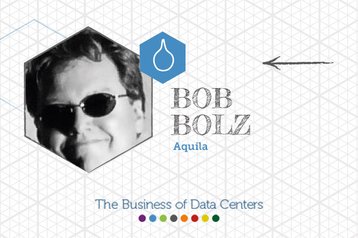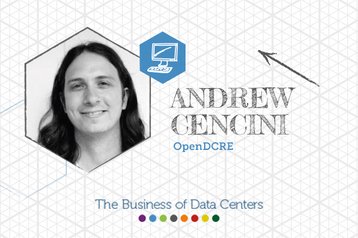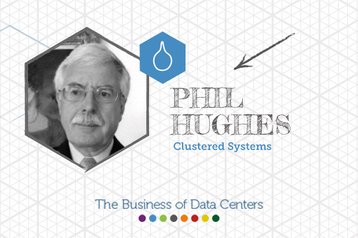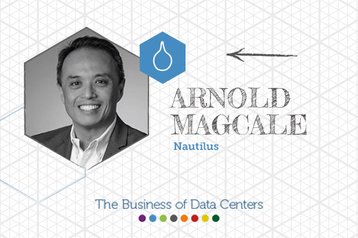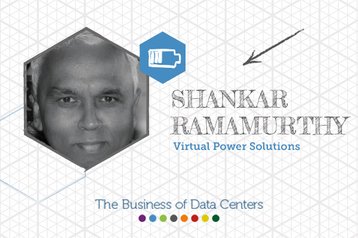While software may be taking control over the upper layers of the data center, behind all of it lies a vast network of hardware, and for this feature we profile some of the leaders behind the innovation in power and cooling vital to the future of the industry.
In the following pages we list ten of the people that are leading in this area of data center hardware, with a short fact-file on each. This is by no means a comprehensive list but it does include many of the players we think are making a difference.
In alphabetical order:
- Yuval Bachar, LinkedIn
- Bob Bolz, Aquila
- Andrew Cencini, OpenDCRE
- Ben Cutler, Microsoft
- Jonathan Heiliger, Open Compute
- Phil Hughes, Clustered Systems
- Arnold Magcale, Nautilus
- Chris Malone, Google
- Shankar Ramamurthy, Virtual Power Solutions
- Kushagra Vaid, Microsoft
This article appeared in the September issue of DatacenterDynamics magazine.
Yuval Bachar
After spells at Cisco, Juniper Networks and Facebook, Yuval Bachar is now LinkedIn’s principal engineer of global infrastructure architecture and strategy. He has re-thought LinkedIn’s network architcture, and launched the Open19 rack, which brings the benefits of the Open Rack to 19 inch racks.
List:
- Yuval Bachar, LinkedIn
- Bob Bolz, Aquila
- Andrew Cencini, OpenDCRE
- Ben Cutler, Microsoft
- Jonathan Heiliger, Open Compute
- Phil Hughes, Clustered Systems
- Arnold Magcale, Nautilus
- Chris Malone, Google
- Shankar Ramamurthy, Virtual Power Solutions
- Kushagra Vaid, Microsoft
This article appeared in the September issue of DatacenterDynamics magazine.
Bob Bolz
Aquila
Aquila has created the first fully liquid cooled Open Compute system - with Bob Bolz at the helm of the company’s HPC and data center developments. The AQuarius water cooled supercomputing system releases this year, promising a (partial) PUE as low as 1.06. The company believes that air cooling is set to hit a ceiling soon, with water cooling the only way to keep up with power demands. Bolz has been a proponent of open source since the ‘90s.
List:
- Yuval Bachar, LinkedIn
- Bob Bolz, Aquila
- Andrew Cencini, OpenDCRE
- Ben Cutler, Microsoft
- Jonathan Heiliger, Open Compute
- Phil Hughes, Clustered Systems
- Arnold Magcale, Nautilus
- Chris Malone, Google
- Shankar Ramamurthy, Virtual Power Solutions
- Kushagra Vaid, Microsoft
This article appeared in the September issue of DatacenterDynamics magazine.
Andrew Cencini
OpenDCRE
After years at companies like Microsoft, Rackable Systems, Nebula (and a stint as an assistant code enforcement officer), Andrew Cencini turned his eye to the data center. The result: the Open Data Center Runtime Environment, a modern, open, data center monitoring and management API. Created by Vapor IO, the company he co-founded, OpenDCRE is an open source product aimed at everything from the hyperscale data center market to those on the edge.
List:
- Yuval Bachar, LinkedIn
- Bob Bolz, Aquila
- Andrew Cencini, OpenDCRE
- Ben Cutler, Microsoft
- Jonathan Heiliger, Open Compute
- Phil Hughes, Clustered Systems
- Arnold Magcale, Nautilus
- Chris Malone, Google
- Shankar Ramamurthy, Virtual Power Solutions
- Kushagra Vaid, Microsoft
This article appeared in the September issue of DatacenterDynamics magazine.
Ben Cutler
Microsoft
If you decide to go for a scuba dive, there’s a small chance that, among the crabs and seaweed, you will happen upon a data center. Microsoft’s Project Natick is headed by Ben Cutler and aims to find out if data centers can live below the waves, taking the idea of water cooled racks to the very limit. Before this Jules Verne-esque project, Cutler was a program manager at DARPA, where he was behind the US Army’s next generation battlefield intelligence system, Insight.
List:
- Yuval Bachar, LinkedIn
- Bob Bolz, Aquila
- Andrew Cencini, OpenDCRE
- Ben Cutler, Microsoft
- Jonathan Heiliger, Open Compute
- Phil Hughes, Clustered Systems
- Arnold Magcale, Nautilus
- Chris Malone, Google
- Shankar Ramamurthy, Virtual Power Solutions
- Kushagra Vaid, Microsoft
This article appeared in the September issue of DatacenterDynamics magazine.
Jonathan Heiliger
Open Compute
The open source data center movement owes a lot to this ex-Facebook VP and current venture capitalist, for Jonathan Heiliger is the creator of the Open Compute Project, as well a founding member of the Open Networking Foundation. As a VC, Heiliger helped to raise funds for Coolan, advising the company as it grew, until its sale to Salesforce in July. He now works at Vertex Ventures, once again looking to fund the next big thing.
List:
- Yuval Bachar, LinkedIn
- Bob Bolz, Aquila
- Andrew Cencini, OpenDCRE
- Ben Cutler, Microsoft
- Jonathan Heiliger, Open Compute
- Phil Hughes, Clustered Systems
- Arnold Magcale, Nautilus
- Chris Malone, Google
- Shankar Ramamurthy, Virtual Power Solutions
- Kushagra Vaid, Microsoft
This article appeared in the September issue of DatacenterDynamics magazine.
Phil Hughes
Clustered Systems
Phil Hughes created Clustered Systems Company to solve the difficulties around deploying large HPC systems. The company’s first foray into the market was its two-phase pumped refrigerant Touch Cooling tech which reduces energy consumption by up to 50 percent. Clustered products are used in the SLAC National Accelerator Laboratory, achieving 2 million server hours with zero failures.
List:
- Yuval Bachar, LinkedIn
- Bob Bolz, Aquila
- Andrew Cencini, OpenDCRE
- Ben Cutler, Microsoft
- Jonathan Heiliger, Open Compute
- Phil Hughes, Clustered Systems
- Arnold Magcale, Nautilus
- Chris Malone, Google
- Shankar Ramamurthy, Virtual Power Solutions
- Kushagra Vaid, Microsoft
This article appeared in the September issue of DatacenterDynamics magazine.
Arnold Magcale
Nautilus
The notion of a data center on the high seas seemed to have ended in a watery grave, as the likes of Google and a former US Navy Admiral failed to turn their ideas into a shippable product, but then Nautilus came on the scene. Founder Arnold Magcale first launched the company in 2013, and then became the first to launch a waterborne data center prototype. Nautilus uses river or sea water in a primary circuit, with a closed secondary water circuit cooling its racks. Other Nautilus founders include Jim Connaughton, a former White House environmental advisor. Sun Microsystems founder Scott McNealy is on its advisory board.
List:
- Yuval Bachar, LinkedIn
- Bob Bolz, Aquila
- Andrew Cencini, OpenDCRE
- Ben Cutler, Microsoft
- Jonathan Heiliger, Open Compute
- Phil Hughes, Clustered Systems
- Arnold Magcale, Nautilus
- Chris Malone, Google
- Shankar Ramamurthy, Virtual Power Solutions
- Kushagra Vaid, Microsoft
This article appeared in the September issue of DatacenterDynamics magazine.
Chris Malone
Keeping the sprawling behemoth that is Google online is no easy task, and as a ‘Distinguished Engineer’ at the company, Chris Malone is responsible for its data center infrastructure and IT hardware R&D, including power distribution (power plant to chip), IT hardware design (chip to cooling plant), and controls. He heads the team responsible for developing Google’s next-generation data centers with a focus on efficiency, sustainability, and cost, and has over a hundred US and international patents to his name.
List:
- Yuval Bachar, LinkedIn
- Bob Bolz, Aquila
- Andrew Cencini, OpenDCRE
- Ben Cutler, Microsoft
- Jonathan Heiliger, Open Compute
- Phil Hughes, Clustered Systems
- Arnold Magcale, Nautilus
- Chris Malone, Google
- Shankar Ramamurthy, Virtual Power Solutions
- Kushagra Vaid, Microsoft
This article appeared in the September issue of DatacenterDynamics magazine.
Shankar Ramamurthy
Virtual Power Solutions
Ramamurthy spent decades running companies such as Esseven Infotech, Guru, Inc and Epiance, before launching Virtual Power Solutions as a stealth start up in 2012. The company, which automates data center power management, quickly raised funding and clients, launching ICE (Intelligent Control of Energy) a hardware and software solution to maximize performance in the data center.
List:
- Yuval Bachar, LinkedIn
- Bob Bolz, Aquila
- Andrew Cencini, OpenDCRE
- Ben Cutler, Microsoft
- Jonathan Heiliger, Open Compute
- Phil Hughes, Clustered Systems
- Arnold Magcale, Nautilus
- Chris Malone, Google
- Shankar Ramamurthy, Virtual Power Solutions
- Kushagra Vaid, Microsoft
This article appeared in the September issue of DatacenterDynamics magazine.
Kushagra Vaid
Microsoft
Does anyone actually like lead acid UPS batteries? This is the question that drives Vaid as he works to eliminate the need for them entirely, instead replacing a separate UPS with small lithium ion cells placed directly in the server rack. Vaid, the general manager for server engineering at Microsoft’s cloud and enterprise division, hopes this approach can deliver a 5X cost reduction, 24 percent reduction in facility footprint and a 15 percent improvement in PUE.
List:
- Yuval Bachar, LinkedIn
- Bob Bolz, Aquila
- Andrew Cencini, OpenDCRE
- Ben Cutler, Microsoft
- Jonathan Heiliger, Open Compute
- Phil Hughes, Clustered Systems
- Arnold Magcale, Nautilus
- Chris Malone, Google
- Shankar Ramamurthy, Virtual Power Solutions
- Kushagra Vaid, Microsoft
This article appeared in the September issue of DatacenterDynamics magazine.

